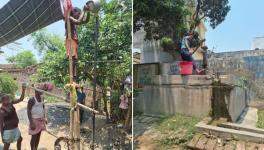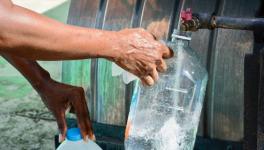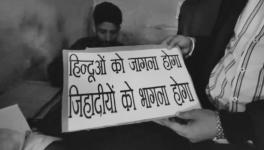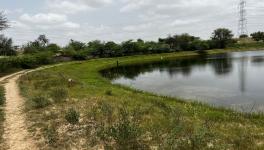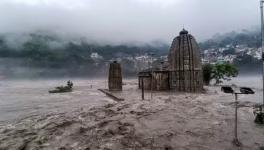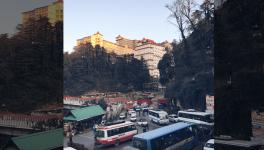Amid Declining Groundwater and Mismanagement, Who’s Really Responsible for Water Scarcity?
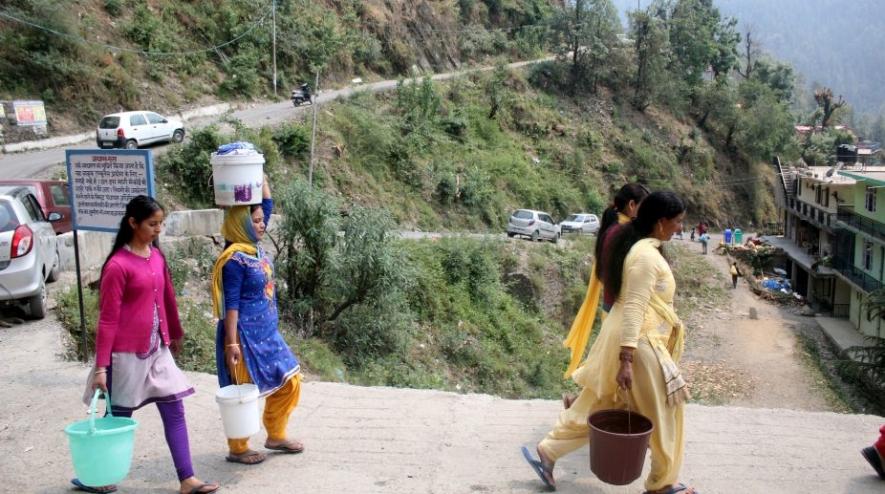
With a two-metre decline in groundwater level in the last 10 years, the Union Ministry of Jal Shakti has included Una district in Himachal Pradesh in the list of 255 water-stressed districts in the country.
A team constituted by the Centre under the Jal Shakti Abhiyan reached Una on Monday. During its three-day tour, the team will study the realities of depleting groundwater in the district. It is led by Rajiv Kumar, joint secretary in the Ministry of Electronics and Information Technology, who has said that the availability of water to each person in the country during 1951 was 5,177 cubic metre per year, which has now come down to 1,345 cubic metre.
The other members include Bhagwan Das, director in the Ministry of Food and Public Distribution and NK Meena, an engineer with the water and power sector. Una district Commissioner Sandeep Kumar, officials from other departments concerned and stakeholders were also present.
Rajiv Kumar said that the abhiyan (campaign) began on July 1 and the first phase would be completed by September 15 during which grey areas would be identified and discussions would be held with stakeholders to find workable solutions on the important issues. In the subsequent phases, activities would be taken up on the field to implement the plans.
As the nodal officer for Una district, he said that five basic activities had been proposed by the ministry to tackle the groundwater stress: water conservation and rainwater harvesting, renovation of traditional water bodies, reuse of borewell recharge structures, watershed development in the valley catchment areas and intensive afforestation.
Senior state hydro-geologist KS Mandhotra said that 99% water used for irrigation and drinking purposes in the district was drawn from the ground aquifer and at least 22 piezometers had been installed at various pumping stations in the district in 2009 that provided daily data on the water level status. He said the depletion trend had been calculated at 20 centimetre per year.
Mandhotra said every groundwater aquifer had a dynamic and static water resource. While dynamic water was the quantity that was recharged every year through rain, the static reserve was the one that permanently existed in various layers of sand and gravel.
In Una district, besides the entire dynamic resource, an additional 48% of it from the static reserve was being withdrawn every year.
What About the Other Districts?
Northern India has registered a critical fall in groundwater levels ranging between 75% and 85%, according to a monitoring report by the Central Ground Water Board (CGWB). The groundwater crisis is also acute in the national capital and neighbouring states of Punjab, Haryana, Himachal Pradesh and Uttarakhand, which have recorded a sharp fall in the groundwater levels, ranging from 70% to 80%.
The problem of erratic water supply continues to plague most parts of the state. Irregular water supply was normally seen in the summer months, but it has become a regular feature now, causing resentment among the residents. According to reports in the local dailies, in Kullu, Shimla, Una, Hamirpur, Solan and Mandi, most localities of the town are totally dependent on piped water for their daily needs. Repeated snags in water supply schemes in these towns are causing a lot of hardships to the people who have no other source to fall back upon.
Shimla, for the first time in its history, saw an unprecedented water crisis resulting in widespread protests and even marches to the chief inister's residence at midnight last summer. This time around, with the onset of monsoon, water supply cuts have begun as the catchment areas have stopped pumping water due to increased silt levels because of the rains.
“Rain in the catchment areas of the Giri has increased the silt level to 7,000 PPM and we have no option other than stopping the pumping of water since yesterday,” said Chief Executive Officer of Shimla Jal Prabandh Nigam Ltd (SJPNL), Dharmender Gill. The SJPNL has also alerted the residents to boil water for 20 minutes before consuming it, as it has higher content of mud and silt.
Many hydro geologists believe that Shimla in North India and Udupi and Mangaluru in coastal Karnataka are on the verge of becoming Tier 2 cities which would have a ‘Day Zero’ situation soon.
Where Does the Responsibility Lie?
Unlike other states, groundwater level has little to do with the water crisis in the hill state and its capital. Owing to its hilly terrain and its natural water sources like glaciers, rivers etc., groundwater plays a smaller role in water supply across the state. Yet, despite having 3,330 water supply schemes in the state (especially in the rural areas), residents face water supply shortage every summer. For example, SJPNL had shut the pumping of water from three major sources after the silt level in Giri and Gumma had risen to 7,000 particles per million (PPM) since last night due to which the town saw no water supply and is likely to witness very little supply in the coming days as well.
According to news reports, at the time of the peak tourist season, the demand for water rises to 45 million litres per day (MLD). However, due to low precipitation, Shimla has reserves of only 18 to 27 MLD. There are seven surface water sources in Shimla, which are supposed to supply around 54 MLD. But the hill town is facing a huge demand-supply gap.
According to The Egyptian Journal of Remote Sensing and Space Sciences published in 2015, the demand-supply gap on Shimla which was eight MLD in 2013, will increase by five times in 2031 and 12 times in 2051.
While in May 2019, the Himachal Pradesh High Court ordered the Shimla Municipal Corporation not to supply water tankers, not just to common citizens but also VVIPs and also directed the corporation to stop any construction in the town and even ordered a ban on car washing, these are rather temporary solutions to a more acute problem.
Former Mayor and a senior member of the Communist Party of India (Marxist) (CPIM) Sanjay Chauhan told NewsClick, “The pragmatic solution to the problem is to introduce gravity schemes as only they can be relevant. There is a complete mismanagement by the government, be it the present government or the previous government. The major problem is that the government is outsourcing water supply which will only benefit private companies and will put burden on the public.”
According to Chauhan, gravity schemes, which would mean tapping water from direct sources like glaciers as opposed to lifting and harnessing water in reservoirs, is a better solution to control the situation in the longer run. “We had proposed a plan in 2016 which would require a one-time investment of approximately Rs 1,200 crore wherein only smaller maintenance works would be required every year and even the total expenditure would settle in eight years. However, the government did not approve it. Instead, they are completely privatising the SJPN,” he said.
Completely privatising the supply of water would mean straining the Satluj to produce electricity to support water lifting schemes costing nearly Rs 100 crore per year. “This will increase water tariff and burden the people without actually resolving any water problem. And the private companies will definitely incur profits,” Chauhan told NewsClick.
The CPI(M) has also dubbed the two-year performance of the BJP-controlled Shimla Municipal Corporation (SMC) as dismal, accusing it of increasing the tax burden on people and indulging in wasteful expenditure.
Get the latest reports & analysis with people's perspective on Protests, movements & deep analytical videos, discussions of the current affairs in your Telegram app. Subscribe to NewsClick's Telegram channel & get Real-Time updates on stories, as they get published on our website.










